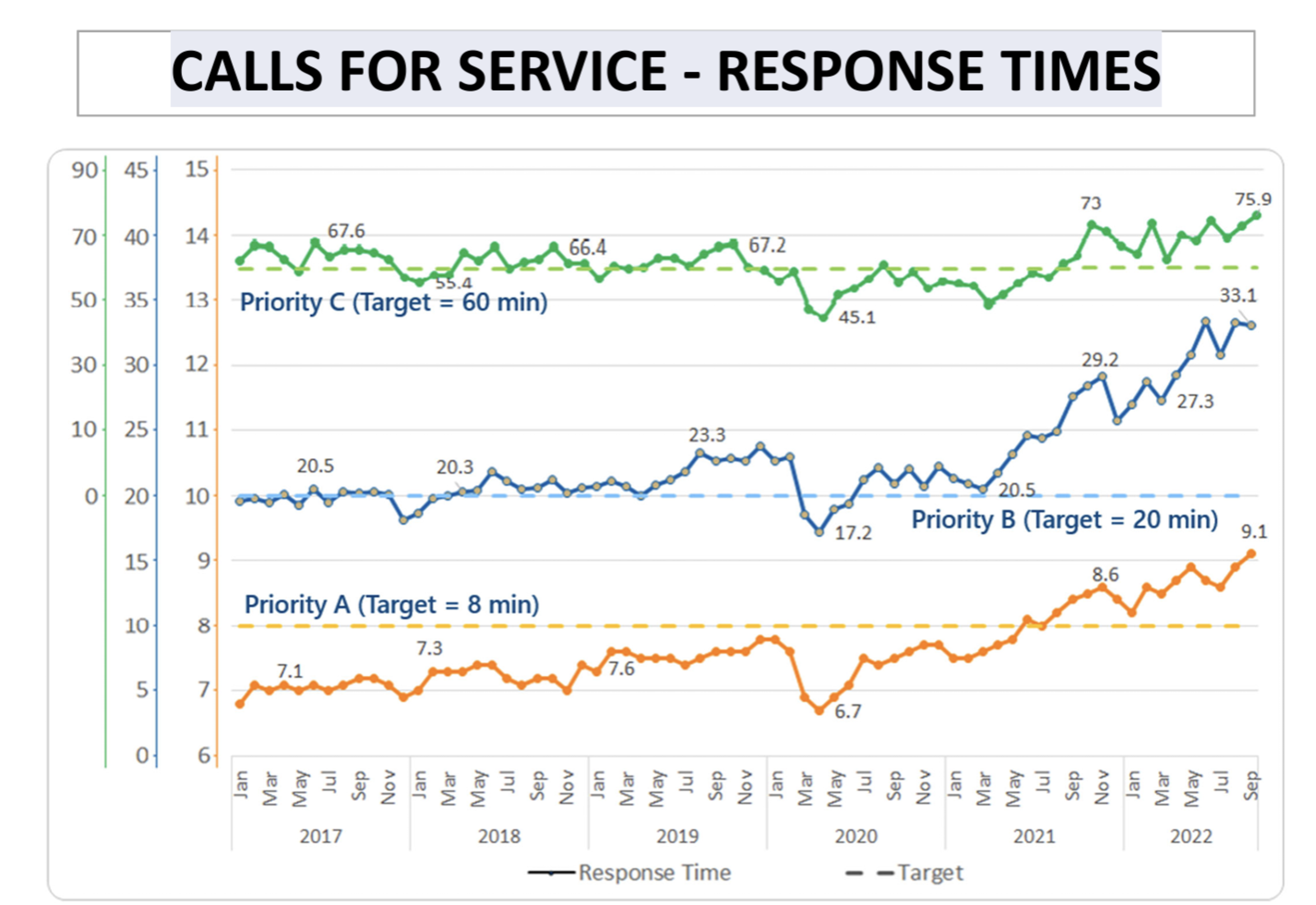The San Francisco Police Department is taking longer to respond to all types of service calls, despite the number of those calls decreasing, according to a budget report presented at a January Police Commission meeting.
The report showed the average police response time was significantly longer (opens in new tab) than the target times for all types of calls: highest priority “hot calls” had an average response time of 9.1 minutes in 2022, a full minute over the target response time. Lower priority calls take anywhere from 13 to 15 minutes longer, on average.

It took longer for police to respond in 2022, even as the number of calls to police dropped by 38% since 2019. Calls to 911 also sank by 22% in the same period. SFPD also handled a smaller share of crisis intervention team (CIT) calls than it did four years ago, as the city’s Street Crisis Response Team upped its services across San Francisco.
Staffing Issues
SFPD chief financial officer Patrick Leung blamed lengthening response times to what he and other city leaders say is an agency-wide staffing crisis. District 6 Supervisor Matt Dorsey—a former police communications staffer—reiterated in January that the city is on the verge of a “catastrophic police staffing shortage” and proposed a resolution to match police recruitment bonuses.
The Police Commission report showed that the number of full duty staffers dropped (opens in new tab) to 1,537 by the end of 2022, down from 1,872 in 2017. SFPD estimates they need roughly 2,182 staffers to operate efficiently.
District 4 Supervisor Joel Engardio also said that the majority of the Sunset neighborhood—covered by Taraval Police District—may only have three to four officers on call on a given night, despite serving over 130,000 residents.
“That’s why when you call the police, it can take a long time for someone to show up if you’re not in imminent danger,” Engardio said. “When it comes to a property crime, it’s taking longer for police to come because they’re going from hot call to hot call all over this vast geography.”
READ MORE: ‘Worse Than It’s Ever Been’: Crime Rising in San Francisco’s Sleepy Sunset District
San Francisco’s lagging response times places it among the major U.S. cities with the greatest increases in response times between 2019 and 2022, according to crime analyst Jeff Asher (opens in new tab).
Asher found that San Francisco ranked below just five other cities, with an average estimated response time increase of 12.8 minutes. Taking the top spot was New Orleans, with response times taking an average of 95 additional minutes longer than they did four years ago.
“Longer response times are logically related to widespread staffing declines in big city police departments,” Asher wrote, noting that research showed that half of police (opens in new tab) agencies had fewer officers than a few years ago, and most reported a decline in officer applications.
Decreasing Calls For Service
Despite concerns about a staffing shortage, SFPD has had to deal with far fewer calls for service than in previous years.
In 2022, SFPD also handled 56% fewer self-initiated or on-view calls than it did in 2019. These types of calls can include traffic stops or when an officer witnesses and responds to an incident. SFPD says that when these kinds of calls decrease, it indicates a lack of “proactivity time” that officers have outside of responding to hot calls.
San Francisco has sought alternative community-based or public health-forward approaches to policing in the past, which has shifted SFPD’s responsibility for some service calls.
When the city implemented the Street Crisis Response Team (opens in new tab) as an alternative to law enforcement, for example, the agency took 38% of lower priority service calls in 2022, lowering the number of crisis intervention calls SFPD responded to by 10,895 last year.
